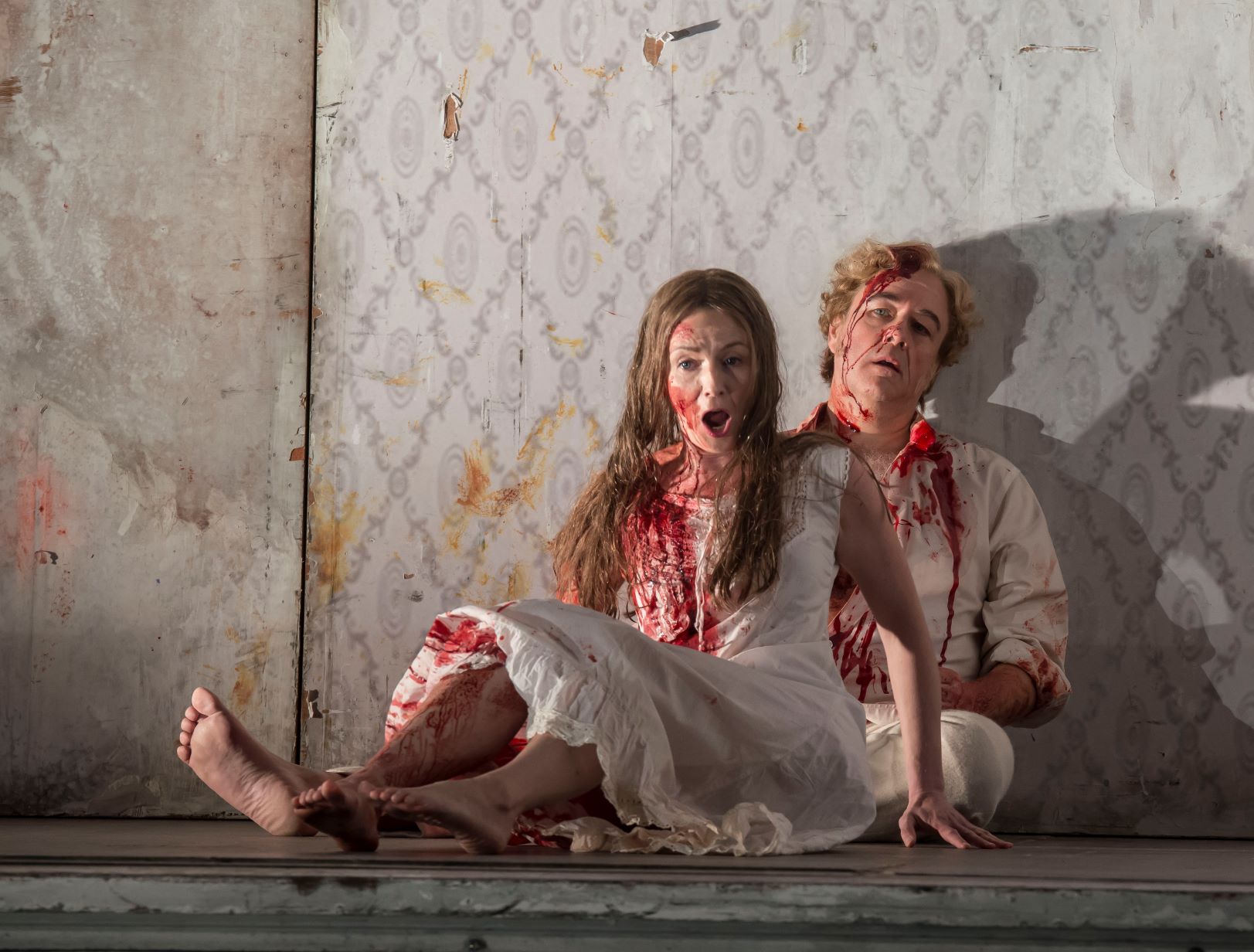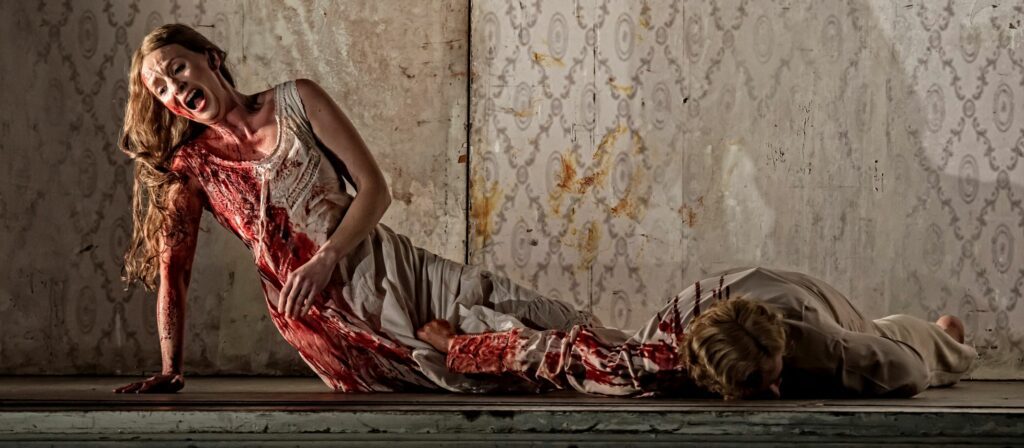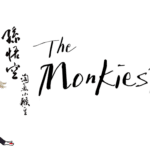While David Alden’s production of Donizetti’s Lucia di Lammermoor contains a few puzzling or unresolved aspects, it is powerful, memorable and effective. First seen at English National Opera in 2008, it has returned to London for a third run, having also been presented in other cities, including Oslo and Toronto. I saw the opening night of the run on Sept. 25th; it will be in repertoire at the Coliseum until Dec. 5th.
The action has been moved forward to Victorian times. Central to the production’s impact is the idea of stolid, patriarchal, ‘respectable’ society oppressing the vulnerable individual. This would seem to be a theme for which Alden feels particular empathy—this production is roughly contemporary with his Peter Grimes for ENO, in which the crowd became a swaying, menacing force to mirror the stormy sea. Here, charcoal-grey-clad, bowler-hatted, briefcase-wielding bureaucrats climb in through the windows of the dilapidated Ravenswood Castle like ants or locusts eager to devour whatever riches remain. As Lucia is forced to sign the wedding contract (and thus restore her family’s fortunes), stern-faced couples present an array of identical husband-and-wife units, a fortress of black and grey, to enforce the strictures of convention.
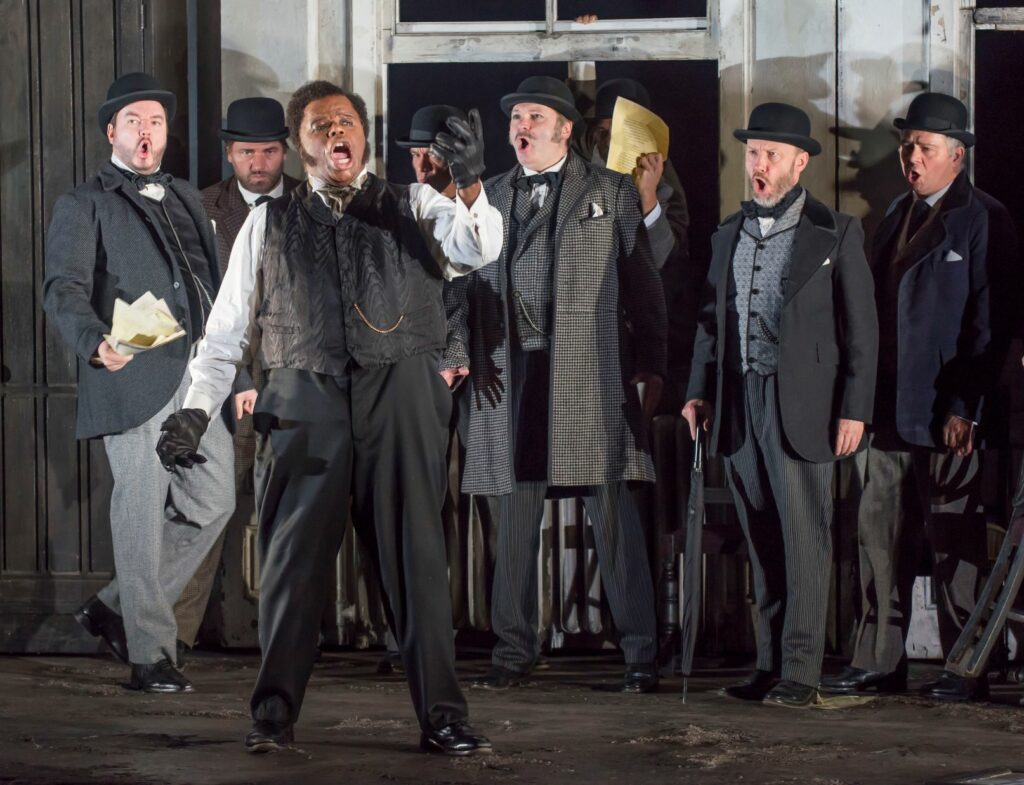
Lester Lynch (Enrico) and Chorus in English Opera Company’s Lucia di Lammermoor. Photo: John Snelling
If one image from this production will remain with me for ever, it is that of the slight, girlish figure of Sarah Tynan’s Lucia, in her bloodstained white nightdress, against an implacable wall of black suits and bombazine dresses. Making her role debut, Tynan gave a magnificent performance in which her mastery of coloratura was used to express character rather than draw attention to itself. Ostensibly intimate, light and sparkling, her voice carried without difficulty and was at one with her subtle acting. Though the ovation after her mad scene was fully deserved, her singing of it was rightly, and deeply, chilling rather than thrilling.
At the opposite end of the acting and singing spectrum was Clive Bayley’s scenery-chewing act as the Calvinist preacher, Raimondo. One is loath to castigate a performance that may well have been faithful to the instructions of Alden (directing the revival himself). But Bayley clearly has a majestic bass that could have put the character across with an unyielding severity far more telling than this growling and shouting.
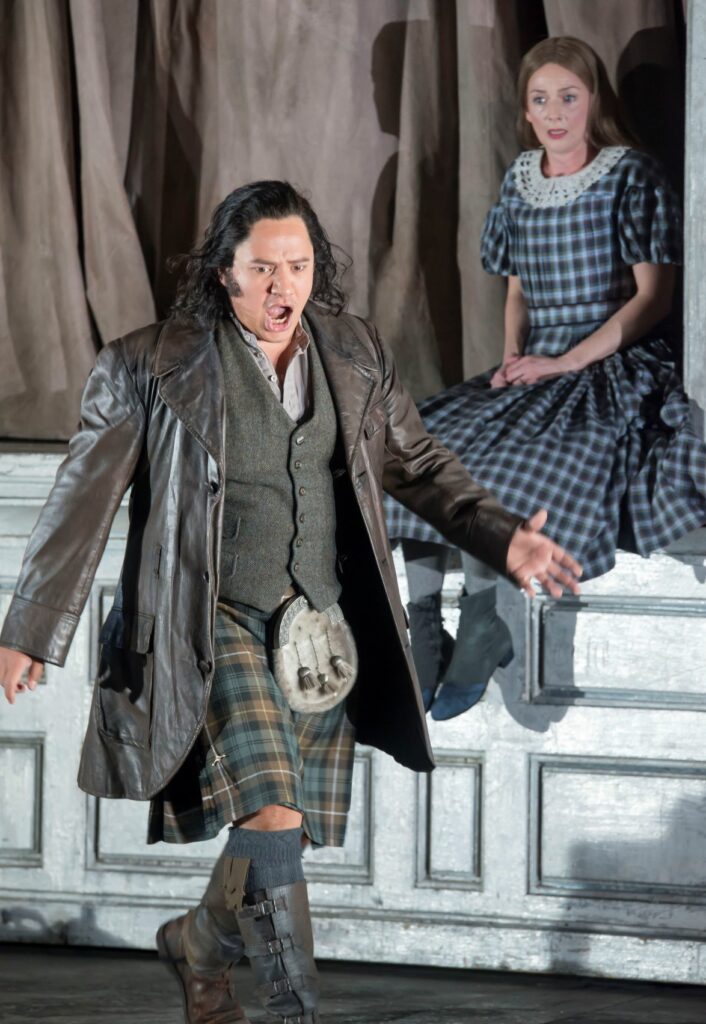
Eleazar Rodríguez (Edgardo) and Sarah Tynan (Lucia) in English Opera Company’s Lucia di Lammermoor. Photo: John Snelling
Between these two extremes, Mexican tenor Eleazar Rodriguez sang most attractively and expressively as Edgardo, Lucia’s lover. Lester Lynch, in the high baritone role of Lucia’s brother, Enrico, put his heart and soul into the interpretation of a complex and troubled character, if undoubtedly a vicious bully. This sometimes meant that his wide vibrato spoiled the line, but maybe his control will improve as the run goes on. Incidentally, both Rodriguez and Lynch made unfortunate use of what I think of as the Operatic Stagger—a strange form of acting ubiquitous on the music theatre stage but seen nowhere else. In it, anguish is physically expressed by clutching the hands together, bending the knees and tottering backwards. Who invented it? I wish they hadn’t.
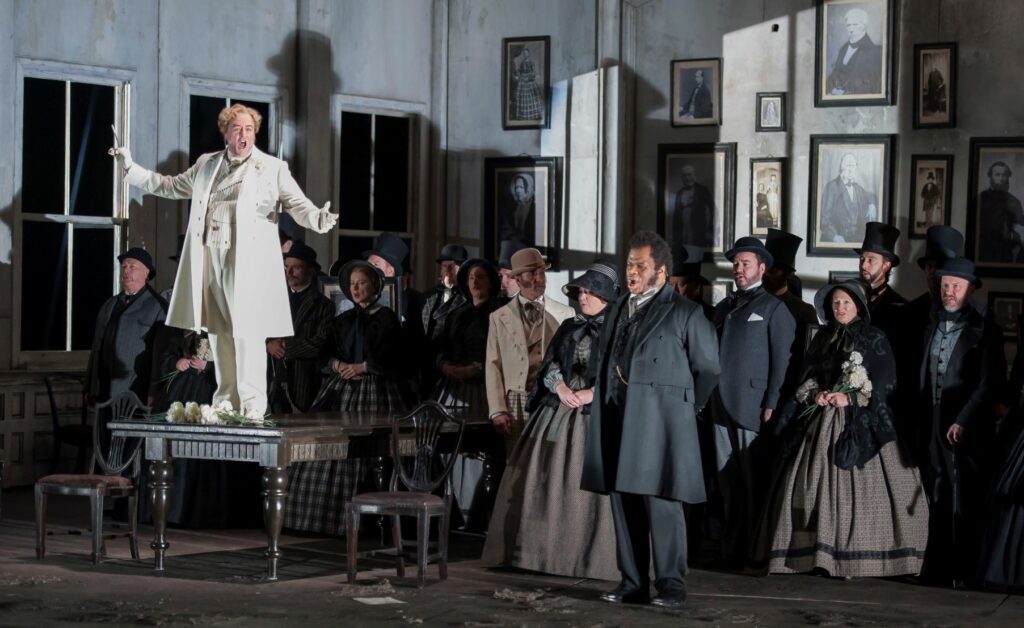
Michael Colvin (Arturo), Lester Lynch (Enrico) and Chorus in English Opera Company’s Lucia di Lammermoor. Photo: John Snelling
Since Lucia’s unwanted husband, Arturo, is murdered after one scene, the singer playing him needs to create an immediate impression. Michael Colvin, the one Canadian in the cast, had ample swagger and panache, not to mention vocal lustre, with which to do just that. He was aided in this by his dazzling white, bejewelled attire, the most spectacular of Brigitte Reiffenstuel’s excellent costumes. Elgan Lŷr Thomas sang with incisive detail as Normanno, and Sarah Pring gave us a nicely judged Alisa, in this production more a governess than a companion to Lucia.
Which brings us to the less easy-to-work-out aspects of the production. Lucia wears childish clothes, clutches dolls, and she and Enrico squabble over toys. While pressurizing Lucia to sign the wedding contract, Enrico ties her to a bed-head and attempts to put his hand up her skirt. The implications of repression and abuse seem to require more back story for them to be related to the action. Also, the updating further confuses a political situation already muddled by Donizetti’s reworking of Scott’s novel—why is Edgardo fighting for Scotland in the mid-19th century?
Anyway… Conductor Stuart Stratford draws bright, up-front colours from the ENO Orchestra, with the wind band maintaining a separate identity from the strings in the vintage Italian manner. In all, this show has great impact. I have previously nominated the visual moment that will remain with me; aurally, it is the last note of Lucia’s mad scene as sung by Sarah Tynan on the first night, a scream stifled to a sigh and vanishing into the night.

